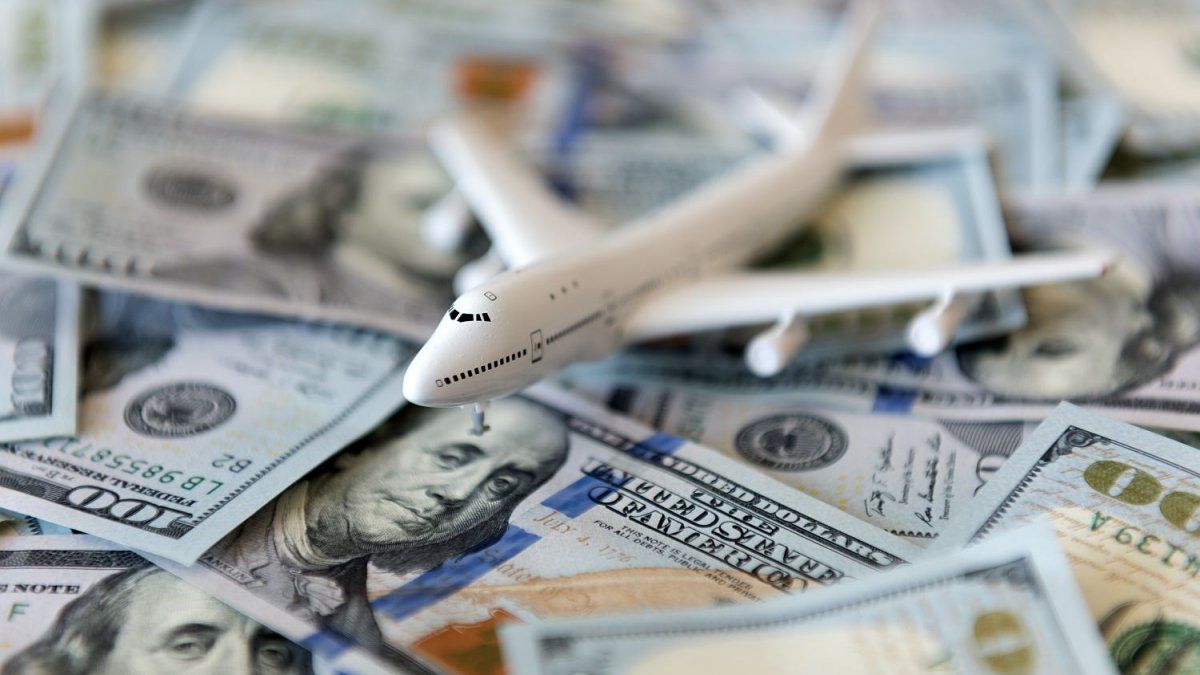This reduces the deficit impact of this consumption and gives an idea of the magnitude of the flow of foreign currency that goes through the international tourist channel. The red of the services sector grew 14% monthly in October to $744 million.
The latest data from the Exchange Balance of the Central Bank (BCRA) once again showed that The deficit in the services sector maintained its growing trend, reaching a level of 744 million dollars last October (14% more than the previous month). This is the highest record in the last twelve months. In any case, the accumulated deficit so far this year amounts to US$3,819 million, which implies an improvement of 39% compared to the red of the same period in 2023.
The content you want to access is exclusive to subscribers.
It is worth noting that the deficit of the services sector represents more than 47% of the current account balance of the Exchange Balance, which in October was US$1,581 million – explained by net expenditures in the Primary Income accounts for US$1,599 million. and Services for US$744 million, offset by the surpluses of the Goods and Secondary Income accounts for US$744 million and US$18 million, respectively.


In relation to what happened last October, official information shows that the Services red remained in tone with that of a year ago, being The same factors explained the imbalance: net expenses for Travel, tickets and other card payments (US$691 million), Freight and insurance (US$164 million) and Others for US$129 million. These negative flows were partially offset by net revenues from Professional and Technical Business Services of US$240 million. According to the BCRA, Approximately 50% of expenses for trips, tickets and other card payments are directly paid by clients with their own funds in foreign currency.which reduces the deficit impact of this consumption on the exchange market and international reserves. Which then gives an idea of the magnitude of the flow of foreign currency that goes through the international tourist channel.
In addition, the BCRA remembers that, as happens with exports of goods, up to 20% of charges for exports of services can be entered into the country through the stock market within the framework of the aforementioned “Increase Program.” Exporter” (PIE). Therefore, this portion of the income does not appear in the published statistics of the exchange market and exchange balance because no record is made in the Information Regime of Exchange Operations – with the exception of those collections that are received and deposited in local currency accounts. foreign exchange for subsequent settlement in the securities market, which are recorded as exchange operations, with no net effect on the exchange market. This is related to interannual comparisons since a year ago this prerogative did not apply to exporters, which clouds the statistical comparison.
How the red of the tourism sector and other card payments is made up
Regarding the red of the tourism sector and other card payments, it is observed that the deficit of US$691 million is made up as a Travel and other card payments of the negative balance of US$595 million made by Entities and others due to Card cancellation, plus another US$50 million by Tour Operators and other transfers, while Passenger transportation services (Airlines and other carriers of passengers) contributed to a deficit of US$47 million.
As already mentioned, Primary Income operations represented a net outflow of US$1,599 million in October, which is explained by net interest payments of US$1,590 million and net expenses of profits, dividends and other foreign income for US$9 million. While on the side of the Government and the BCRA, The Exchange Balance reveals that gross interest payments were made for US$1,449 million, corresponding to US$1,261 million drawn on by the national government as “other payments.” (around US$1,050 million for the advance transfer to foreign accounts of interest services on public securities payable in January 2025) plus US$189 million transferred to international organizations (excluding the IMF) and for other items . For its part, gross cancellations from the private sector amounted to US$159 million, the BC reports and adds that secondary income operations represented a net income of US$18 million.
Regarding the balance of So far in 2024, the comparison of the accumulated annual gross income and expenses of services by concept with the same period in 2023 shows an improvement of 39%, mainly as a result of the drop in gross expenses, especially in freight and insurance. Thus, on the gross services revenue side, a year-on-year increase of 8% is observed, reaching a total of US$6,972 million, which is explained by the increase in the Travel, tickets and other card payments category of 43% year-on-year. s2,160 million while the gross revenues of Freight and Insurance, and Professional and Technical Business Services fell 27% and 1% year-on-year, respectively (amounting to US$212 million yu$s4,601 million respectively). On the side of gross service expenditures, the accumulated figure for the first ten months of 2024 shows a year-on-year drop of 10% to $10,791 million, where those linked to professional and technical business services remained unchanged at $10,791 million. s2,968 million while those of Travel, tickets and other card payments fell 3% year-on-year to $6,790 million and those of Freight and Insurance a 48% au$1,034 million. Without a doubt, in the case of the drop in Freight and Insurance expenses, they would be associated with lower imports.
Source: Ambito
I am a 24-year-old writer and journalist who has been working in the news industry for the past two years. I write primarily about market news, so if you’re looking for insights into what’s going on in the stock market or economic indicators, you’ve come to the right place. I also dabble in writing articles on lifestyle trends and pop culture news.




